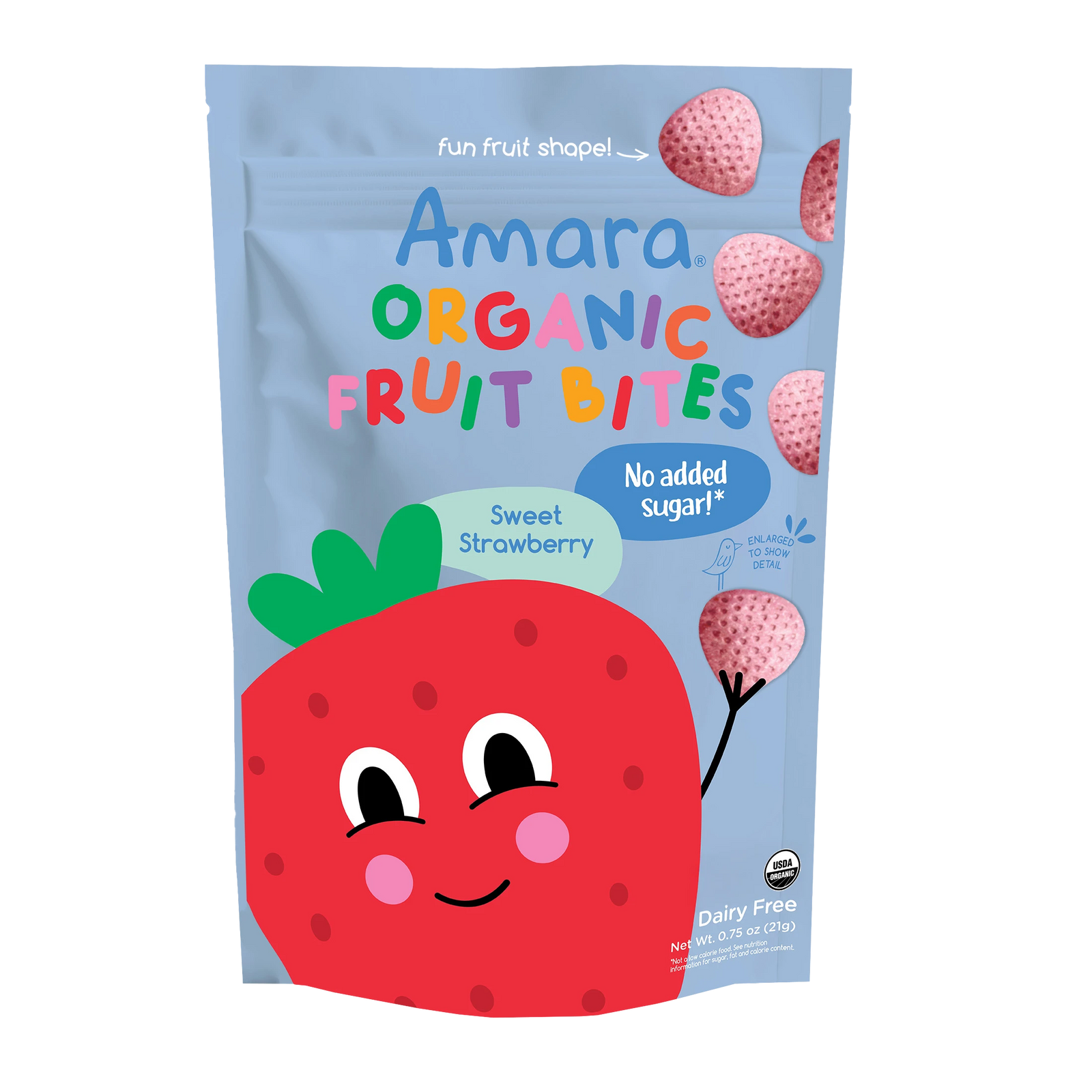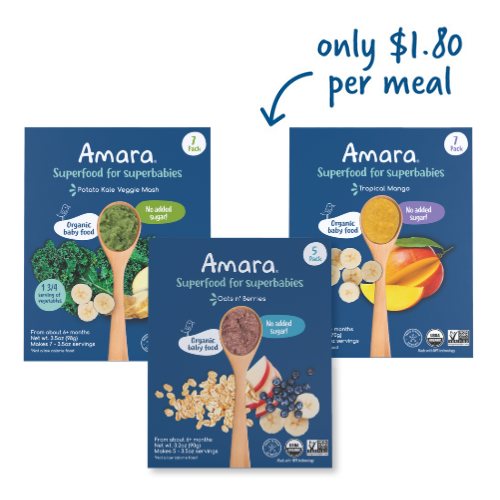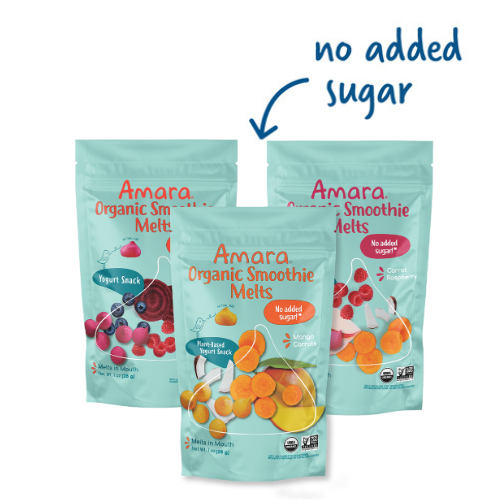
My one year old refuses to drink cow’s milk. Now what?
Don’t worry; it’s okay. Culturally we have been programmed to think we need to offer a tall glass of white beverage with every meal, but the data shows that cow’s milk, in itself, is not what is necessary in a toddler’s diet. It is the calcium and protein it offers. Milk can be used as an easy way to supplement a child’s diet when they are not getting enough calcium and protein from other sources. But a child eating a well-balanced diet may not require any cow’s milk or milk substitute at all.
That being said, if you are looking for a beverage that offers similar nutritional benefits as milk, seek out an unsweetened version of almond milk, cashew milk, hemp milk or coconut milk. Each non-dairy milk has a slightly different taste, creaminess, and nutritional profile, so try a few and see which your toddler responds to best.
Seek out calcium-rich foods. Of course, traditional dairy foods, like cheese and yogurt, are first to come to mind. When serving yogurt, opt for whole milk varieties with zero added sugars.
Typical dairy products, though, aren’t the only foods rich in calcium. Broccoli and leafy greens have a higher calcium absorption rate than dairy foods, but they contain lower calcium content overall. This works out to about 4 servings of broccoli for each serving of cow’s milk. In short, you’d need to serve significantly more leafy greens and plant-based sources of calcium if you were to eliminate dairy altogether. The best balance would be offering cheese and yogurt, calcium-rich plant-based foods, and non-dairy milk. As always, if you have any concerns about whether your child is getting enough nutrients, be sure to consult your pediatrician.
What is the appropriate serving size for my toddler?
There has been a lot of discussion lately around the idea of serving sizes and mealtime battles. The prevailing advice is that as parents, we shouldn’t try to control “how much” our child eats. It can lead to power struggles, meltdowns, and unnecessary anxiety and worry. Let’s face it. We can’t make our kids eat anything. That is out of our control. Instead, parents can focus on what is in our control, which is a lot actually.
We can control what is served and when. If for example, you give your toddler a sandwich, applesauce cup and cookie, and your toddler only eats the applesauce and cookie, it might make you worried and demand they eat the sandwich. But what if, in that case, you only serve the sandwich? With a cheese stick and cucumber slices? Then you don’t need to worry about portion sizes as much because what they are eating is more nutrient-dense. If you worry, my kid will never eat that, keep trying and try a variety. Most of us will reach for cookies when we are given the choice between cookies and carrot sticks, so try not giving the choice at all. Let the “treat” be a piece of fresh fruit or a fun snack with no added sugar, like these Yogurt Smoothie Melts, and serve some meals with nothing sweet at all.
During family mealtimes, try serving the meal family style, and letting your toddler practice dishing themselves up. That way they can practice following their own body signals and let their own appetites be their guide. If you know you’ll get annoyed if your toddler leaves a bunch on their plate, you could dish up a very small amount first, and then they can always ask for more. Just like adults, a toddler’s appetite can vary a ton from not only day to day or week to week, but even meal to meal. While some kids can thrive on eating small portions always, other kids are constantly eating. Portion size guidelines are only averages, over all populations and over time. They do not reflect at all the difference in kids’ bodily needs, individual appetites or even how they are feeling that day. As long as you are always serving food that is varied and nutritious, you can stop worrying so much about portion sizes from day to day. As long as your child is growing and meeting milestones, and being given the chance and opportunity to try new, wholesome foods, there is no need to obsess over the “how much.”
My daughter’s daycare is nut-free. Any ideas for healthy, nut-free sandwiches to pack?
Here are some healthy, nut-free, favorite sandwich combos. I steered clear of processed lunch meat slices, and shared plant-based choices with no added sugars.
Egg Salad: Mix hard boiled egg with some mayo or plain yogurt. Spice it up with a little chopped chive or pickle. If your kids aren’t digging on eggs, this is just as yummy with mashed cooked chickpeas. Serve open faced on a slice of multigrain bread with a piece of romaine lettuce.
Sunflower Seed Butter and Banana Roll: Spread unsweetened sunflower seed butter on a whole wheat tortilla, add a banana, sprinkle with hemp seed, and roll up. Cut the roll into slices or coins for an appetizing presentation.
Tomato and ricotta: There’s nothing better than fresh, in-season tomatoes. Spread toast with fresh ricotta or cottage cheese and top with tomato slices. If you’re feeling adventurous, layer in some fresh basil leaves. I like this one on a whole wheat english muffin.
Olive tapenade and roasted veggie pocket: I find most people have a love or hate relationship with olives. And what I like about the tapenade is that it can be spread very thinly instead of giving whole olives which might be too intense at first. Inside a pita, spread the tapenade and then fill with veggies of your choice. I like roasted red peppers or roasted zucchini slices. If tapenade is a no-go, try hummus instead.
Cream cheese and cucumber slices: I like to serve this on an everything bagel and mash some scallions or chopped fresh spinach in the cream cheese for a veggie-kick.
What are your go-to nut-free options? Share your ideas with us in the comments. Happy feeding!
Looking for a clean, healthy and delicious snack option for your baby or toddler? Check out our new Yogurt Smoothie Melts with zero added sugar, designed for babies 8 months and up.
100% organic veggies and fruit, non-gmo, vegan, dairy-free, no preservatives or additives, gluten-free.
SHOP NOW








Leave A Comment